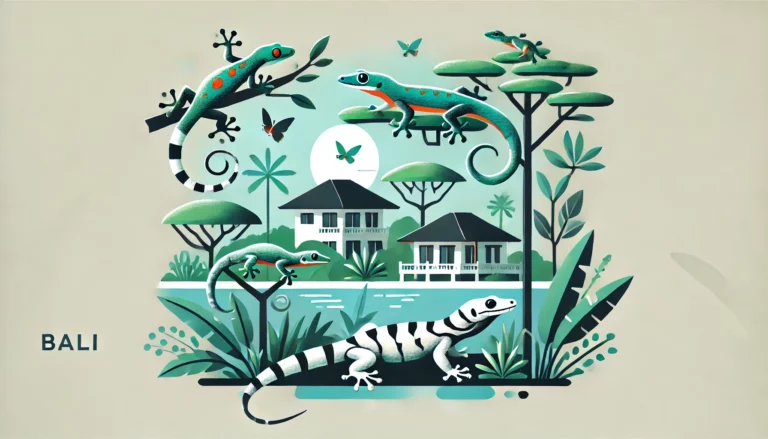Snakes in Bali: A Comprehensive Guide
Bali is home to a wide variety of snake species, both venomous and non-venomous. While most encounters are harmless, it’s essential to know which species are dangerous and how to respond if you come across one. This guide provides an overview of common snakes in Bali, their characteristics, and what to do if you find a snake in your villa.
Non-Venomous Snakes in Bali
1. Reticulated Python (Python reticulatus)
The reticulated python is one of the largest snake species in the world, growing over 6 meters in length. Non-venomous, it uses constriction to catch prey. Often found in forests, rice paddies, and near water, it’s harmless to humans unless provoked.
2. Asian Water Snake (Xenochrophis piscator)
As its name suggests, the Asian water snake lives near rivers and lakes. Non-venomous and harmless to humans, this snake feeds on fish and amphibians. It is commonly found in both rural and urban areas of Bali.
3. Bronzeback Tree Snake (Dendrelaphis tristis)
This slender, fast-moving snake is often seen in trees. It is harmless to humans and recognized by its greenish-bronze coloration. A frequent resident of gardens and forests.
4. Common Wolf Snake (Lycodon capucinus)
This small nocturnal snake is often mistaken for more dangerous species due to its patterned appearance. However, it’s completely non-venomous and poses no threat to humans.
5. Oriental Whip Snake (Ahaetulla prasina)
Known for its vine-like appearance, this slender green snake is commonly found in trees and bushes. It’s non-venomous, and its elongated body helps it blend with foliage. It primarily feeds on frogs and small birds.
6. Indonesian Rat Snake (Ptyas korros)
This non-venomous snake is often found near human settlements where it hunts for rats and mice. It can grow over 2 meters in length and is an important part of the ecosystem, keeping rodent populations in check.
Venomous Snakes in Bali
1. King Cobra (Ophiophagus hannah)
The king cobra is the longest venomous snake in the world, growing up to 5 meters. Its bite delivers potent neurotoxic venom. While rare in Bali, they can be found in forests and are highly dangerous. They raise the front third of their body when threatened.
2. Javan Spitting Cobra (Naja sputatrix)
This cobra is smaller than the king cobra but equally dangerous. It can grow up to 2 meters and has the ability to spit venom at its target, which can cause severe irritation or blindness if it gets into the eyes. Found mainly in rural areas, but occasionally seen near homes.
3. Malayan Krait (Bungarus candidus)
The Malayan krait is highly venomous and primarily nocturnal. With distinctive black and white banding, it is easily identifiable. Its venom can cause respiratory paralysis, so immediate medical treatment is necessary if bitten.
4. White-Lipped Pit Viper (Trimeresurus albolabris)
This bright green pit viper is often found in trees and shrubs. Its venom is not usually fatal to humans but can cause intense pain, swelling, and tissue damage. It is one of the more common venomous species in Bali, particularly in rural areas.
What to Do If You Find a Snake in Your Villa
If you encounter a snake in your villa, follow these steps:
1. Take a Picture
Maintain a safe distance and take a clear photo of the snake. This will help experts identify whether it’s venomous or not.
2. Contact a Snake Expert
Send the picture to one of the following snake experts in Bali for identification and assistance:
- Ron Lilley: Snake removal expert
Contact: +62 813-3849-6700 - Bali Reptile Rescue: Snake removal service based in Canggu
Contact: +62 821-4638-0270
3. Avoid Confrontation
Do not attempt to handle or kill the snake. Many snakes, including venomous ones, will retreat if given space. Ensure children and pets are kept away from the area until help arrives.
4. Stay Calm and Wait for Help
Keep a safe distance from the snake and wait for the professionals to arrive. They will safely remove the snake and relocate it.
Conclusion
Bali is home to a variety of snake species, many of which are non-venomous and play an important role in the ecosystem. However, it’s crucial to know how to identify venomous snakes and what to do if you encounter one. Always contact a professional like Ron Lilley or Bali Reptile Rescue for assistance, and never attempt to handle a snake yourself.







